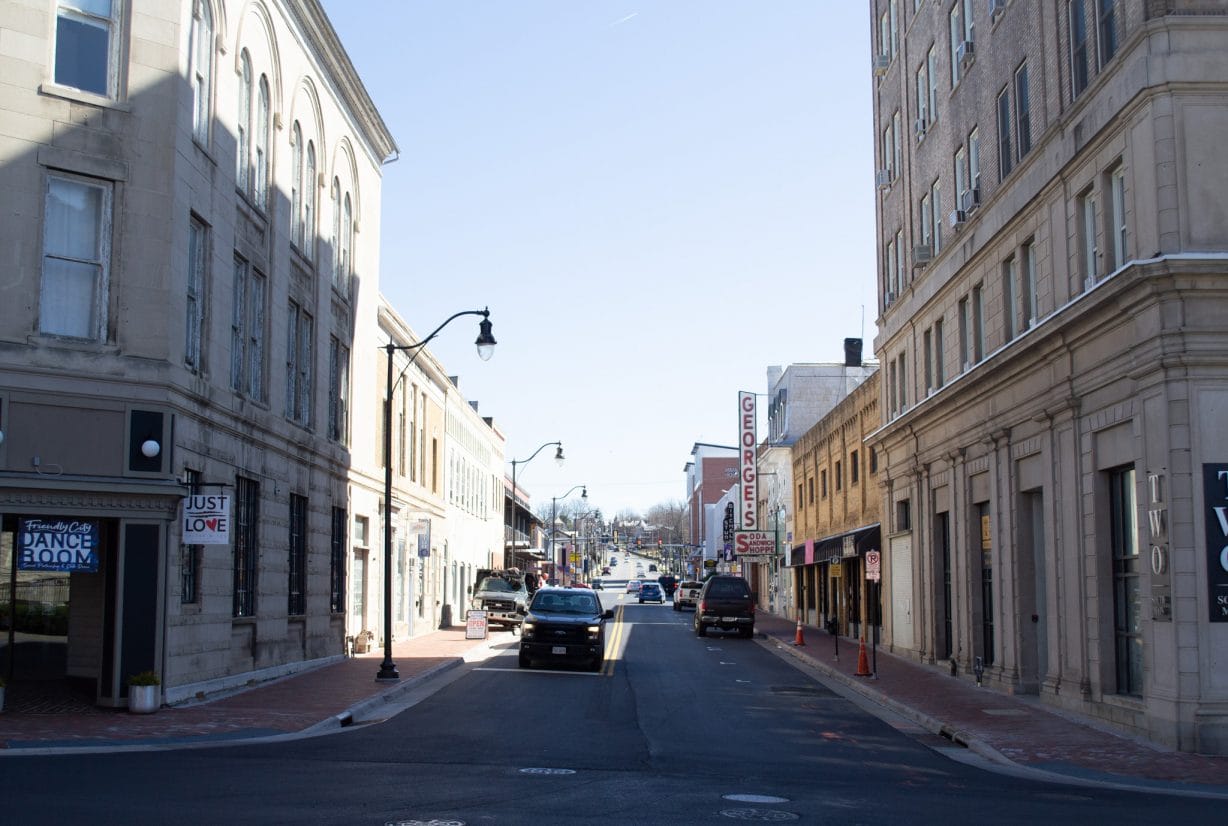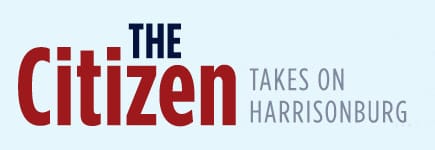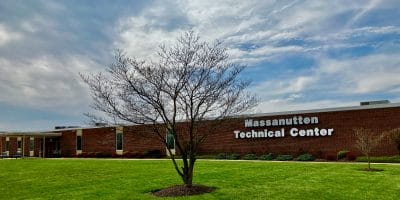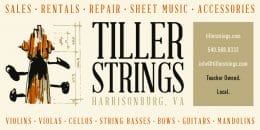A contributed perspectives piece by Carl Larsson
The Richness of Restraint in Harrisonburg’s Downtown Historic District

As an associate professor of finance at JMU whose doctoral work focused on commercial real estate finance, I care deeply about how economic growth can shape community life. I’m grateful for Brent Finnegan’s thoughtful essay on “The Link,” and I share in his hopes: a downtown of neighbors living in community, with fewer car trips, and a stronger tax base. My concern with the Link is very practical: the plan before City Council on August 12 is not yet structured in a way that can fully attain those good ends.
The project’s name – “The Link” – promises outward connection, yet its design leans inward. A six-story wall at the gateway to the Downtown Historic District would interrupt the mountain views and wide-open sightlines that make the public spaces by City Hall and Turner Pavilion feel open and shared. Most of the proposed building’s ground-level frontage appears to be private; only a small corner of the 2.75 acre lot looks like public-facing retail space. With garage parking and private amenities, daily life risks moving behind secured doors rather than out onto porches and sidewalks. We can add homes here without losing the neighborly warmth that defines Harrisonburg.
I love walking downtown and commuting by bike whenever possible, but much of our city is still accessible only by car. Many of the estimated 500-700+ residents of the proposed development will need cars for trips to class and work, for running errands, and for out-of-town travel. If demand for parking exceeds the available spaces, those cars will not disappear; they will search for already scarce curb spaces, crowding out shoppers and visitors. That is not the boost to downtown business that any of us intend.
Mr. Finnegan is correct that a B-1C zoning would bring in more property tax revenue to the city. Yet the likely impact on our city budget is both modest and uncertain. An estimated ~$600,000 in incremental property taxes would amount to only a ~0.14% increase in our total city budget. And if the building leans heavily toward student housing and is later acquired by the university for on-campus beds, it could move off the tax rolls completely. Thin and speculative fiscal gains should not outweigh lasting questions of fit, scale, and place—especially on a block so central to the identity of our beloved city.
It’s true that the Downtown 2040 plan calls for reinvestment in South Downtown. The Downtown 2040 plan, however, also clearly reminds us that “Main and Liberty Streets are the primary front doors to Downtown. They should aspire to the highest standards in design as they reflect the first impression visitors have of Downtown.” (City of Harrisonburg, p. 44). In the absence of an architectural review board in Harrisonburg, it is the responsibility of City Council to ensure that these high standards are met. An out-of-scale wall of apartments at our front door would be incompatible with the way in which we desire to welcome all who come seeking the gentle character and warmth of the Friendly City. And because the developer’s proffers do not strictly lock in today’s renderings, the building’s final materials and detailing may differ, unless more specific design commitments are secured in writing today.
Alternatively, a well-designed R-3 project could usher in a new community of neighbors on this plot while preserving the existing scale of its historic surroundings. A 3-story townhome, apartment, or condo development interspersed with greenery would be both economically feasible and a welcome addition to this block. Imagine walking through the property and seeing friends on their front steps, mature trees keeping watch over the rooflines, and perhaps—if the property owner so wishes—the beautiful Lindsey Funeral Home preserved, continuing to grace South Main Street as one of our city’s most elegant historic buildings.
Larger, six-story buildings can find homes on underused B-1 sites elsewhere without crowding out our fragile historic core. Good growth fits its surroundings and enhances livability for all.
If the applicant insists on pursuing something larger than R-3 here, City Council should look for measurable, binding proffers that truly link private profits and public good. For example, the developer could commit to conducting a sun-and-shadow analysis and include setbacks and step-downs that ease the transition to nearby homes like the historic Octagon House; it could proffer on-site parking sized to demonstrated demand to reduce the risk of parking spillover on the curbs adjacent to nearby businesses, public spaces, and houses of worship; it could increase the proffered minimums of 8 exterior and 90 secure indoor bike parking spaces; and commit to a longer run of active, street-level commercial space to enliven the block. The developer could commit to installing green or solar roofs with third-party certification, and incorporate more specific, binding design proffers to help ensure quality is preserved from rezoning through construction. Let the promises live in the proffers, not only in the pictures.
Concern over the current proposal is not confined to one neighborhood. Downtown belongs to all of us – city, county, and out-of-town visitors alike – and a quickly growing petition, with over 1,000 signatures collected as of August 8th, reflects a broad interest in preserving the scale and character of our historic district.
Saying “no” to this rezoning is not a vote against development. It is a patient “yes” to growth that builds community, honors our historic district, and keeps downtown open and welcoming to all. I invite neighbors to read the public rezoning application, consider the alternative uses of this land, and kindly let City Council know—by email, by petition, or at the public hearing on Tuesday, August 12 at 7 p.m.—that we can welcome more neighbors while also asking for a design that truly links us all.
With gratitude for everyone working towards the common good of our city, I respectfully ask City Council to vote no on this rezoning—and to wait with hope and anticipation for a proposal that better fits our shared front door.
Carl Larsson, Ph.D., is an associate professor of finance at James Madison University. He lives in Harrisonburg along with his wife and two young children. The opinions expressed here are his own.












